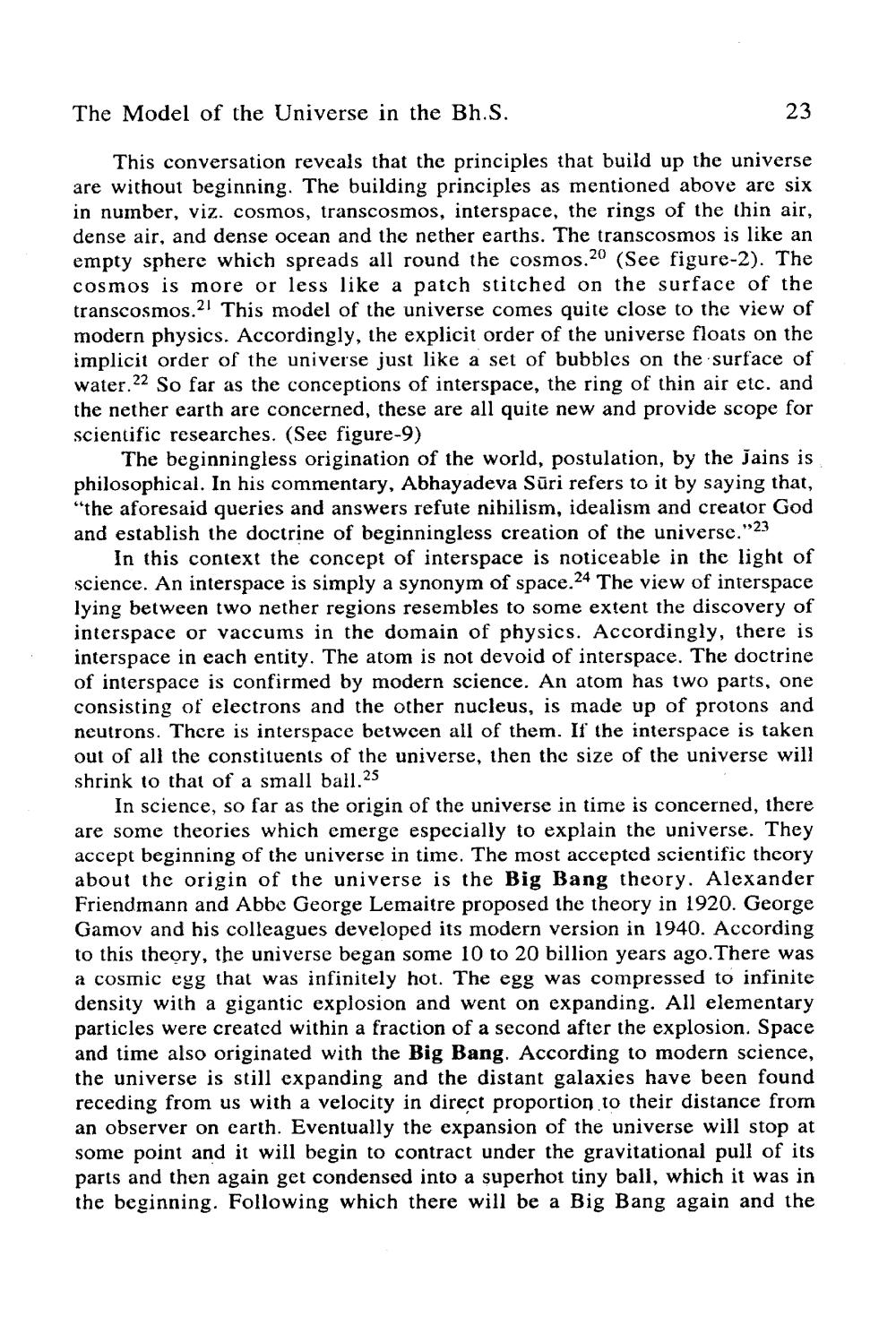________________
The Model of the Universe in the Bh.S.
23
This conversation reveals that the principles that build up the universe are without beginning. The building principles as mentioned above are six in number, viz. cosmos, transcosmos, interspace, the rings of the thin air, dense air, and dense ocean and the nether earths. The transcosmos is like an empty sphere which spreads all round the cosmos.20 (See figure-2). The cosmos is more or less like a patch stitched on the surface of the transcosmos.21 This model of the universe comes quite close to the view of modern physics. Accordingly, the explicit order of the universe floats on the implicit order of the universe just like a set of bubbles on the surface of water.22 So far as the conceptions of interspace, the ring of thin air etc. and the nether earth are concerned, these are all quite new and provide scope for scientific researches. (Sec figure-9)
The beginningless origination of the world, postulation, by the Jains is philosophical. In his commentary, Abhayadeva Sūri refers to it by saying that, "the aforesaid queries and answers refute nihilism, idealism and creator God and establish the doctrine of beginningless creation of the universe."23
In this context the concept of interspace is noticeable in the light of science. An interspace is simply a synonym of space.24 The view of interspace lying between two nether regions resembles to some extent the discovery of interspace or vaccums in the domain of physics. Accordingly, there is interspace in each entity. The atom is not devoid of interspace. The doctrine of interspace is confirmed by modern science. An atom has two parts, one consisting of electrons and the other nucleus, is made up of protons and neutrons. There is interspace between all of them. If the interspace is taken out of all the constituents of the universe, then the size of the universe will shrink to that of a small ball.25
In science, so far as the origin of the universe in time is concerned, there are some theories which emerge especially to explain the universe. They accept beginning of the universe in time. The most accepted scientific theory about the origin of the universe is the Big Bang theory. Alexander Friendmann and Abbe George Lemaitre proposed the theory in 1920. George Gamov and his colleagues developed its modern version in 1940. According to this theory, the universe began some 10 to 20 billion years ago. There was a cosmic egg that was infinitely hot. The egg was compressed to infinite density with a gigantic explosion and went on expanding. All elementary particles were created within a fraction of a second after the explosion. Space and time also originated with the Big Bang. According to modern science, the universe is still expanding and the distant galaxies have been found receding from us with a velocity in direct proportion to their distance from an observer on earth. Eventually the expansion of the universe will stop at some point and it will begin to contract under the gravitational pull of its parts and then again get condensed into a superhot tiny ball, which it was in the beginning. Following which there will be a Big Bang again and the




